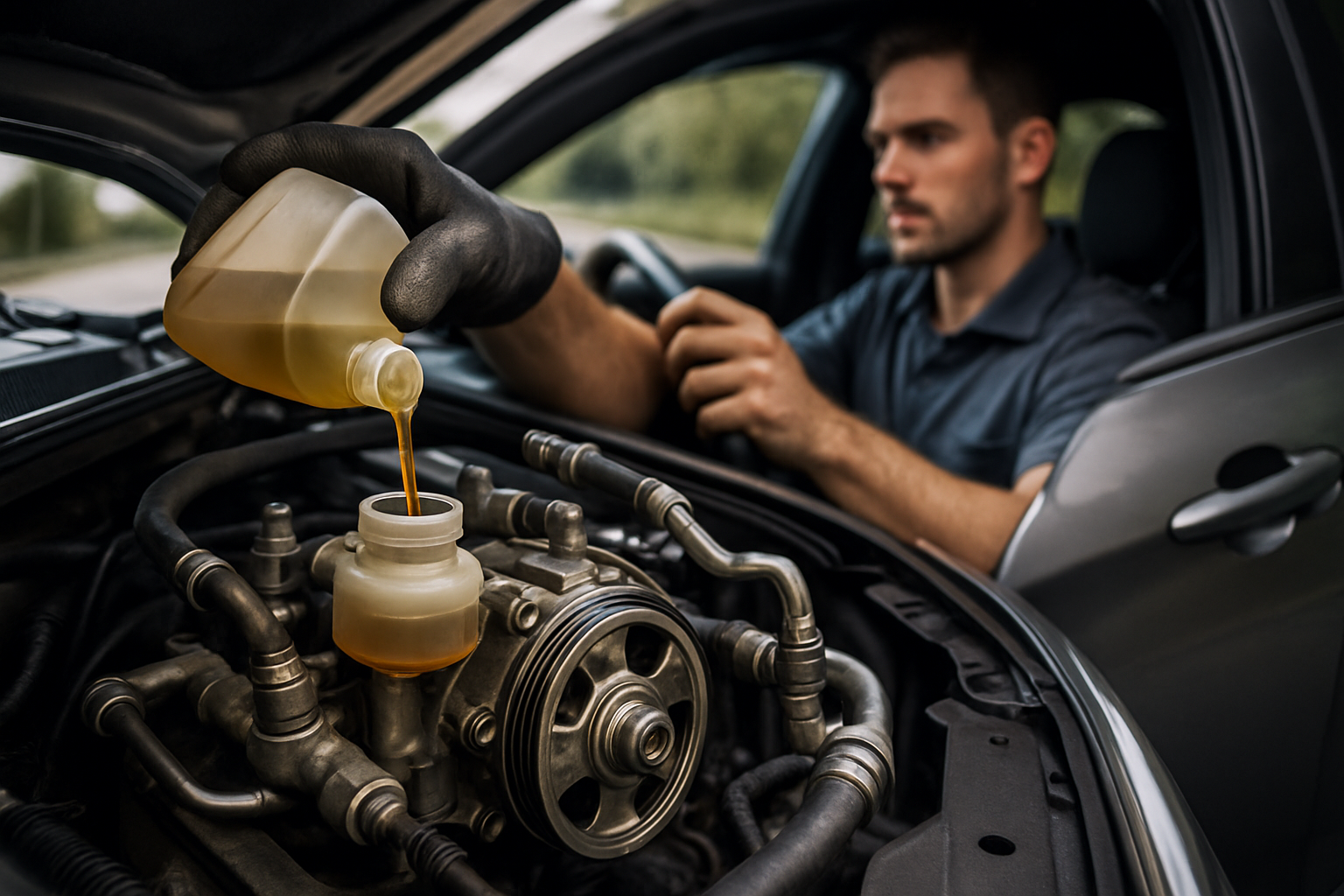Hydraulic Power Steering: The Unsung Hero of Smooth Driving
A silent revolution in automotive control has been quietly shaping our driving experience for decades. Hydraulic power steering, a technology that seamlessly blends mechanical prowess with fluid dynamics, has transformed the way we navigate our vehicles. This ingenious system has not only made driving more accessible to a broader range of individuals but has also significantly enhanced safety and comfort on the road. As we delve into the intricacies of this automotive marvel, we'll uncover how a simple concept has become an indispensable feature in modern vehicles.

How Hydraulic Power Steering Works
At its core, hydraulic power steering is a marvel of fluid mechanics. The system uses a hydraulic pump, typically driven by the engine’s serpentine belt, to pressurize hydraulic fluid. This pressurized fluid is then directed through a series of valves and cylinders connected to the steering mechanism. When the driver turns the steering wheel, these valves open, allowing the pressurized fluid to assist in moving the steering gear, significantly reducing the effort required to turn the wheels.
The Components That Make It Possible
The hydraulic power steering system comprises several key components working in harmony. The power steering pump, reservoir, hoses, and steering gear are the main players. The pump, often referred to as the heart of the system, creates the necessary pressure. The reservoir stores and cools the hydraulic fluid, while the hoses transport the fluid throughout the system. The steering gear, which can be either a rack-and-pinion or recirculating ball type, is where the magic happens, translating the hydraulic assistance into actual wheel movement.
Advantages Beyond Ease of Use
While the primary benefit of hydraulic power steering is the reduction of steering effort, its advantages extend far beyond this. The system provides better road feel and feedback to the driver, enhancing overall control and safety. It also allows for variable assistance, providing more help at low speeds (like when parking) and less at high speeds for better stability. Moreover, hydraulic power steering has enabled the design of vehicles with larger, heavier front ends without compromising maneuverability, paving the way for the SUV and truck revolution.
Maintenance and Common Issues
Like any mechanical system, hydraulic power steering requires maintenance to function optimally. Regular checks of the fluid level and condition are crucial, as low or contaminated fluid can lead to poor performance or system failure. Common issues include leaks from hoses or seals, pump failure, and steering gear wear. Unusual noises, particularly a whining sound when turning, often indicate problems with the system. Proper maintenance can significantly extend the life of the power steering system and ensure smooth, responsive steering.
The Future of Hydraulic Power Steering
As automotive technology advances, electric power steering systems have begun to challenge the dominance of hydraulic systems. Electric systems offer advantages in terms of energy efficiency and compatibility with modern driver assistance features. However, many drivers and automotive enthusiasts still prefer the feel and response of hydraulic power steering, especially in performance and luxury vehicles. The debate between hydraulic and electric power steering continues, with each system having its proponents and applications.
In conclusion, hydraulic power steering remains a cornerstone of automotive engineering, blending simplicity with effectiveness. Its impact on driving comfort, safety, and vehicle design cannot be overstated. As we look to the future of automotive technology, the principles behind hydraulic power steering – the seamless integration of mechanical and fluid systems to enhance human control – will undoubtedly continue to inspire innovations in vehicle dynamics and driver assistance systems.





